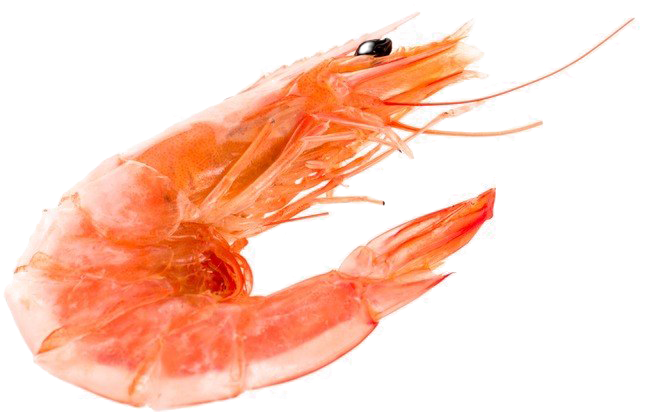Cheap Eats:
Shrimp de Jonghe
In the 1500s, the largely Catholic Portuguese were sailing about, claiming large parts of the world for king and country. While away from home, many of them still observed the holidays and fast days of their religion. Four times a year they celebrated Ember days, fast days when they were not allowed to eat meat. During these particular holidays (known as quatuor tempora or “four seasons”), a favorite dish was battered and fried shrimp. Japan did not have a lot of fried foods at the time the Portuguese arrived, and the Japanese were intrigued by the fried shrimp and adopted the technique of preparing foods that way. And, it is reasonably argued, this (eating fried shrimp during the quatuor tempora) is the most likely origin of both the Japanese cooking method and word tempura.

This is not the only Portuguese shrimp-related etymology, however. As the Portuguese explored the coastline of West Africa, they came upon an area teeming with large, tasty shrimp. They named it the Rio dos Camarões, or Shrimp River. In time, the name evolved and was adopted by the country through which the river flows—Cameroon—the only country I can think of named for a crustacean.
“Shrimp” is a term that pretty much encompasses the entire order Decapoda (ten-legged crustaceans), with the exception of lobsters, crabs and crayfish. Included under the heading “shrimp” are prawns, which some believe to mean large shrimp, others believe it means freshwater shrimp, and still others believe it simply means someone who is British talking about shrimp. Shrimp are found pretty much everywhere, in shallow water and deep, fresh water and salt, in warm water and cold. There are thousands of types of shrimp, though only about 300 species are fished commercially.
Shrimps come in various colors: pink (denoting the presence of iodine in the diet), brown, white, red and blue, with a wide variety of stripes, as well. But size is the difference that matters most to fishermen and consumers. Some freshwater monsters can weigh three to four pounds, while some species border on being microscopic. However, most commercial fisheries lose interest if shrimp are much smaller than 150 to the pound.
Like most things that are abundant and easily caught, shrimp have been eaten since prehistoric times. The ancient Greeks preferred shrimp to lobster, cooking large shrimp wrapped in fig leaves. The Romans used shrimp in their best fish sauce. The Chinese dried shrimp, and thus were the first to come up with a method of transporting this crustacean to markets not at the water’s edge.
Shrimp are extremely perishable. They die when taken out of the water and decay quickly once dead. It wasn’t until the 20th century that the U.S. developed the technology that made it possible to speed this delicate creature to distant markets. And it makes sense that it should be the U.S. who would develop this, because even though shrimp are popular and abundant worldwide, the richest shrimp fisheries in the world are in the Gulf of Mexico.
But the U.S. isn’t just the largest producer of shrimp; it is also the largest consumer. Americans love shrimp, downing hundreds of millions of pounds each year. Of aquatic comestibles, only canned tuna outranks shrimp in quantities consumed in the U.S. And the recipe below offers you the opportunity to be among those who are elevating those statistics.
My dad used to take me out on “dates” from time to time, and one of my favorite destinations for a dad-date was the Chicago Advertising Club. One meal that was particularly memorable was shortly after my 21st birthday, when I enjoyed two completely new items: a brandy Alexander (brandy, crème de cacao and cream) and shrimp de Jonghe. Both were instant favorites. I believed at the time that the shrimp dish was some exotic European creation, but found out years later that it was, in fact, invented at the De Jonghe Hotel and Restaurant in Chicago in the late 1800s. It is a rich, gorgeously flavorful dish that is surprisingly easy to prepare. Enjoy.
Shrimp de Jonghe
1¼ lb. uncooked shrimp, peeled and deveined
10 Tbs. butter
2 cloves garlic, finely chopped
2 Tbs. shallots, finely chopped
½ tsp. salt
2 Tbs. dry sherry
1 to 2 dashes hot pepper sauce or cayenne pepper
½ cup fine bread crumbs
¼ cup finely chopped flat-leaf parsley
Preheat oven to 400°F, checking first to make sure one of the shelves is in the center.
Butter a shallow, 1-quart baking dish — or, if you have them, several individual-sized baking dishes.
Blanch the shrimp in boiling water for 30 seconds, then drain them in a colander. Run them under cold water until cool (to stop cooking).
Soften the butter with a fork. Beat in the garlic, shallots, and salt. When thoroughly blended, add the remaining ingredients (except the shrimp) and blend well. (If you make a large amount of this—say double or triple the recipe—you could do all this in a food processor.)
If the shrimp have not dried sufficiently in the colander, pat dry. Then, arrange the shrimp in a single layer in the baking dish or dishes. Dot/spread the butter-and-crumb mixture over the shrimp, making sure that all shrimp has at least some of the mixture on it. Bake until shrimp are fully cooked and the topping has become lightly brown, about 15 minutes.
Serves 4 as a main course or 6 to 8 as an appetizer.

